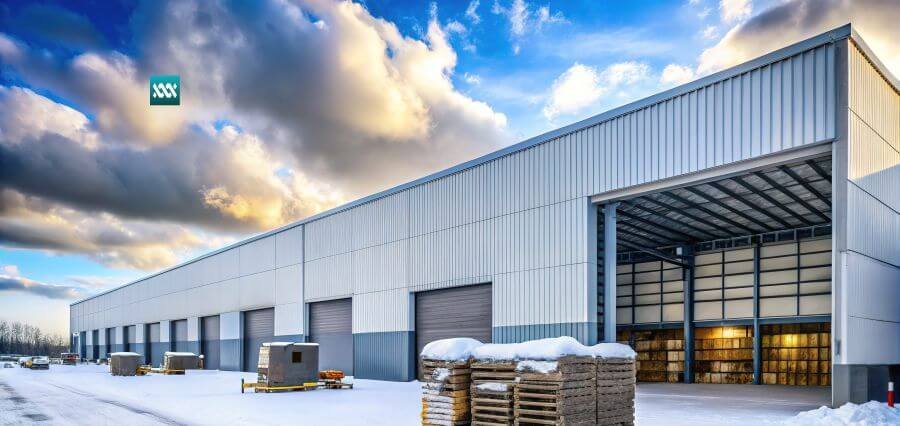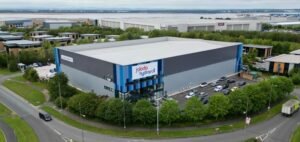Cold chain logistics has become essential for meeting global demand for temperature-sensitive products. This aspect is crucial for ensuring the quality and safety of products that require specific environmental conditions during transportation and storage. This includes items such as pharmaceuticals, food, and chemicals. This critical process relies on advanced technologies for responses to possible challenges and then remains efficient.
Let’s explore how cutting-edge tech reshapes cold chain logistics to meet global needs. Discover actionable insights on optimizing your operations today.
Real-Time Monitoring Enhances Control
In cold chain logistics, constant temperature, and humidity level monitoring is quite critical to avoid spoilage and contamination. In this regard, real-time collection of data by IoT devices now allows logistics providers to track conditions at every stage of transit. When parameters exceed predetermined thresholds, sensors are activated and send alerts to connected cloud-based systems. The immediate corrective action minimizes risks and allows users to build trust in supply chain reliability.
Automation Reduces Human Error
Human monitoring of the cold chain process is prone to several errors. Automation technologies, such as robots and artificial intelligence, enhance processes by improving storage, sorting, and loading methods. Algorithms from AI assess possible future problems, allowing operators to take corrective measures. For instance, while automated warehouses guarantee equal cold effects on products, this automatically minimizes the possibility of inconsistencies while raising efficiency.
Blockchain Ensures Integrity
Transparency is the hallmark of an efficient cold chain logistics solution. Blockchain technology allows for time-stamped and irreversibly recorded and verified transactions and conditions in the supply chain. This technology establishes a permanent, transparent ledger of product movements and ensures end-users that the delivered goods are authentic and of quality. Blockchain further allows compliance with high regulatory standards which reduces disputes and delays.
Renewable Solutions Emphasize Sustainability
To answer growing environmental concerns, the industry moves more towards ‘greener’ technologies, marrying efficiency with sustainability. Less carbon-emitting vehicles, for example, and refrigeration units powered by solar energy help reduce emissions without sacrificing performance. Other new technologies, such as phase-change materials (PCMs), which enable stable temperatures at lower energy consumption, also enforce environmentally conscious practices in cold chain logistics.
AI Enhances Predictive Maintenance
One of the most significant threats to cold chain operations is a kind of failure due to equipment failure. Enhancing artificial intelligence improves predictive maintenance by analyzing historical data to identify potential malfunction patterns, allowing for timely interventions that can reduce downtime and maintenance costs. Such predictive insights empower operators to service equipment well before breakdowns, reducing downtime and preserving product quality. Additionally, it increases the lifecycle of cooling systems delivering long-term cost benefits.
Better Packaging Solutions
Advanced packaging materials are just one of the technologies offering assurance about the integrity of the product. Real-time information on the status of the product evolves with the help of intelligent packaging and its accompanying temperature indicators as it travels. Biodegradable and recyclable materials continue these sustainable goals with green alternatives that provide without compromise.
5G Connectivity Brings about Logistics Transformation
5G networks have revolutionized the cold chain logistics business into unprecedented efficiency. With ultra-low latency and high-speed connectivity, 5G facilitates more precise tracking and monitoring at unprecedented scales. Devices and systems communicate better, guaranteeing responsiveness within a fraction of a second to any change in conditions. All this minimizes delays and streamlines coordination among any stakeholders in the supply chain.
How Data Analytics Plays the Role
Data analytics proves as a valuable resource for better decision-making with regard to cold chain logistics. It can use historical and real-time data in the optimization of delivery routes and storage practices with minimum energy usage. Predictive analytics further supports demands in providing such inventory management, reducing waste, and optimizing availability in peak times. The insights guide businesses to function with agility and precision.
Training and Skill Development
Integrating technology involves a skilled workforce able to handle complicated systems. The training program ensures that employees are well-equipped with the new tools and techniques to reduce the error possibilities. It equips teams with knowledge of sophisticated technologies that encourage businesses to maintain standards of quality and efficiency.
Conclusion
Cold chain logistics is key to maintaining quality, perishable products; it’s technology that has been instrumental in the success of this development. The sector therefore evolves to meet growing demand and translate these into real-time monitoring, automation, blockchain, renewable solutions, and data analytics. These ensure product integrity while also driving sustainability and efficiency in supply chains.








